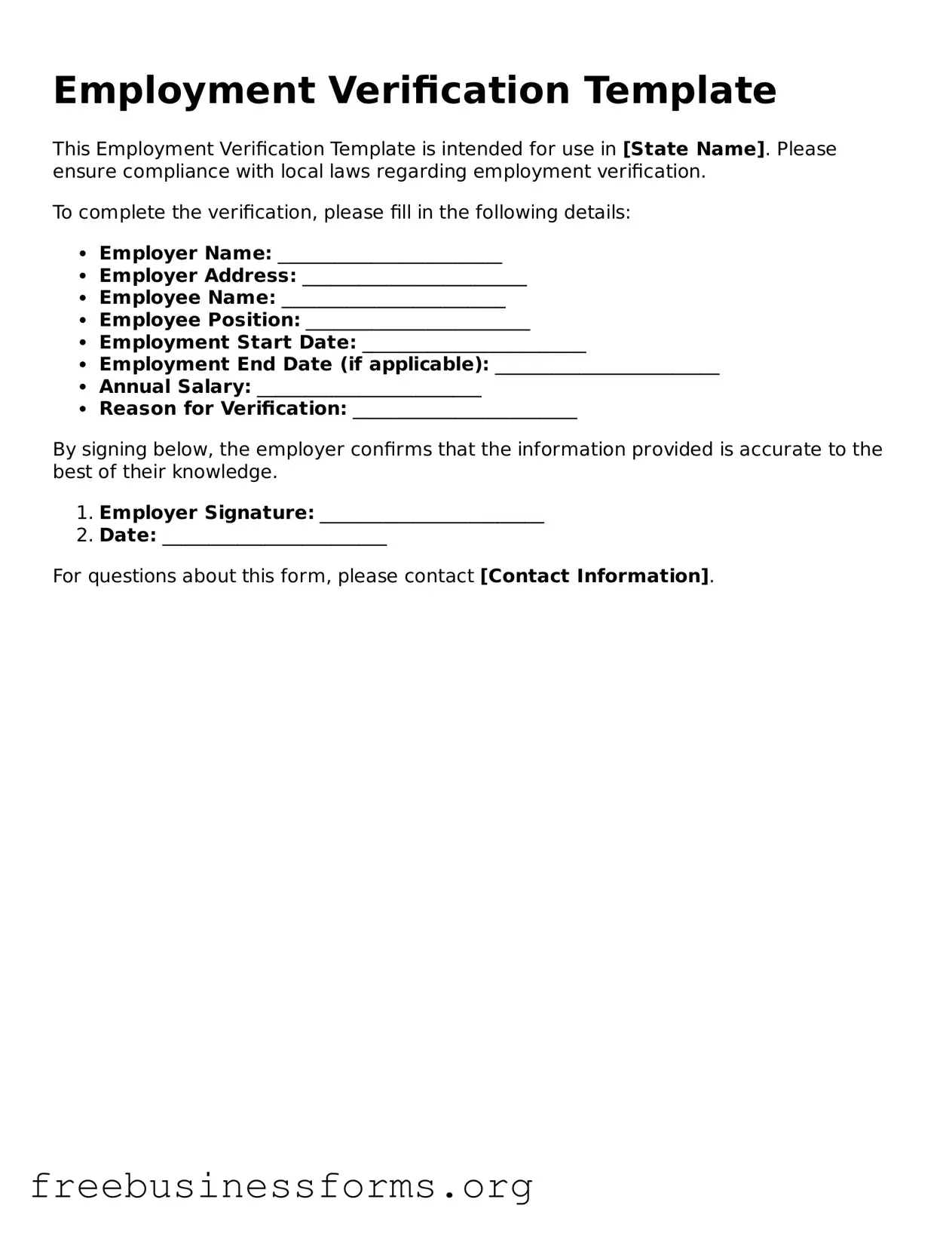Official Employment Verification Form
The Employment Verification form is a document used to confirm an individual's employment status and history. Employers often require this form to ensure that potential hires have the necessary work experience and qualifications. Understanding how this form works can help both employees and employers navigate the hiring process more smoothly.
Open Form Here
